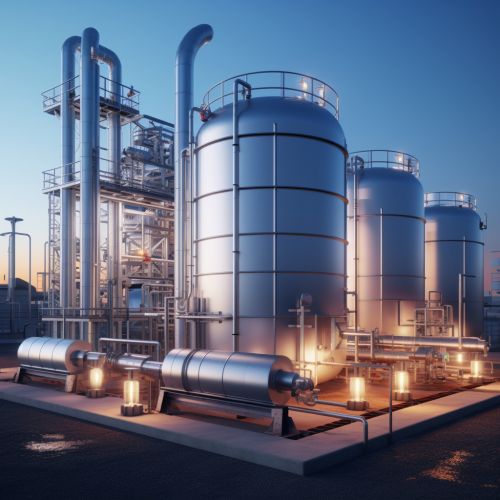Thermochemical storage
Introduction
Thermochemical storage (TCS) is a type of energy storage technology that uses chemical reactions to store and release heat. This technology has the potential to significantly improve the efficiency and cost-effectiveness of renewable energy systems by providing long-term, high-density storage.


Principles of Thermochemical Storage
The fundamental principle behind TCS is the use of thermochemical reactions to store and release energy. These reactions involve the breaking and forming of chemical bonds, which requires or releases heat. By selecting appropriate reactions, it is possible to store heat in the form of chemical potential energy, which can be released again when needed.
There are two main types of thermochemical storage systems: closed and open systems. In a closed system, the reactants and products are contained within the system and the reaction can be reversed to release the stored energy. In an open system, one of the reactants is sourced from the environment (usually air), and the reaction products are released back into the environment.
Closed Thermochemical Storage Systems
Closed TCS systems typically use reversible reactions, where the forward reaction stores heat and the reverse reaction releases it. The reaction is usually endothermic in one direction and exothermic in the other, meaning it absorbs heat when storing energy and releases heat when returning it.
A common example of a closed TCS system is the use of metal hydrides. In these systems, a metal alloy absorbs hydrogen gas under high temperature and pressure, forming a metal hydride and storing heat in the process. When the heat is needed, the system is depressurized and the metal hydride decomposes back into the metal alloy and hydrogen gas, releasing the stored heat.
Open Thermochemical Storage Systems
Open TCS systems typically use reactions with the environment to store and release heat. The most common type of open system uses a process called sorption, where a material absorbs or adsorbs a gas or liquid from the environment, storing heat in the process. When the heat is needed, the process is reversed and the stored heat is released.
One example of an open TCS system is a system that uses a material called zeolite to adsorb water vapor from the air. When the zeolite is heated, it releases the water vapor and stores heat. When the heat is needed, the zeolite is exposed to humid air and it adsorbs the water vapor again, releasing the stored heat.
Applications of Thermochemical Storage
TCS has a wide range of potential applications, including in renewable energy systems, industrial processes, and building heating and cooling. In renewable energy systems, TCS can be used to store excess energy produced during periods of high production (such as during the day for solar power systems) and release it during periods of low production (such as at night or during periods of low wind for wind power systems).
In industrial processes, TCS can be used to store waste heat and use it later, improving the overall efficiency of the process. In building heating and cooling, TCS can be used to store solar heat collected during the day and release it at night, reducing the need for conventional heating and cooling systems.
Challenges and Future Directions
While TCS has significant potential, there are also a number of challenges that need to be addressed. These include the development of materials with suitable reaction properties, the design of efficient and reliable systems, and the reduction of costs.
Despite these challenges, the future of TCS looks promising. With ongoing research and development, it is likely that the efficiency and cost-effectiveness of TCS systems will continue to improve, making them an increasingly viable option for energy storage in a wide range of applications.
